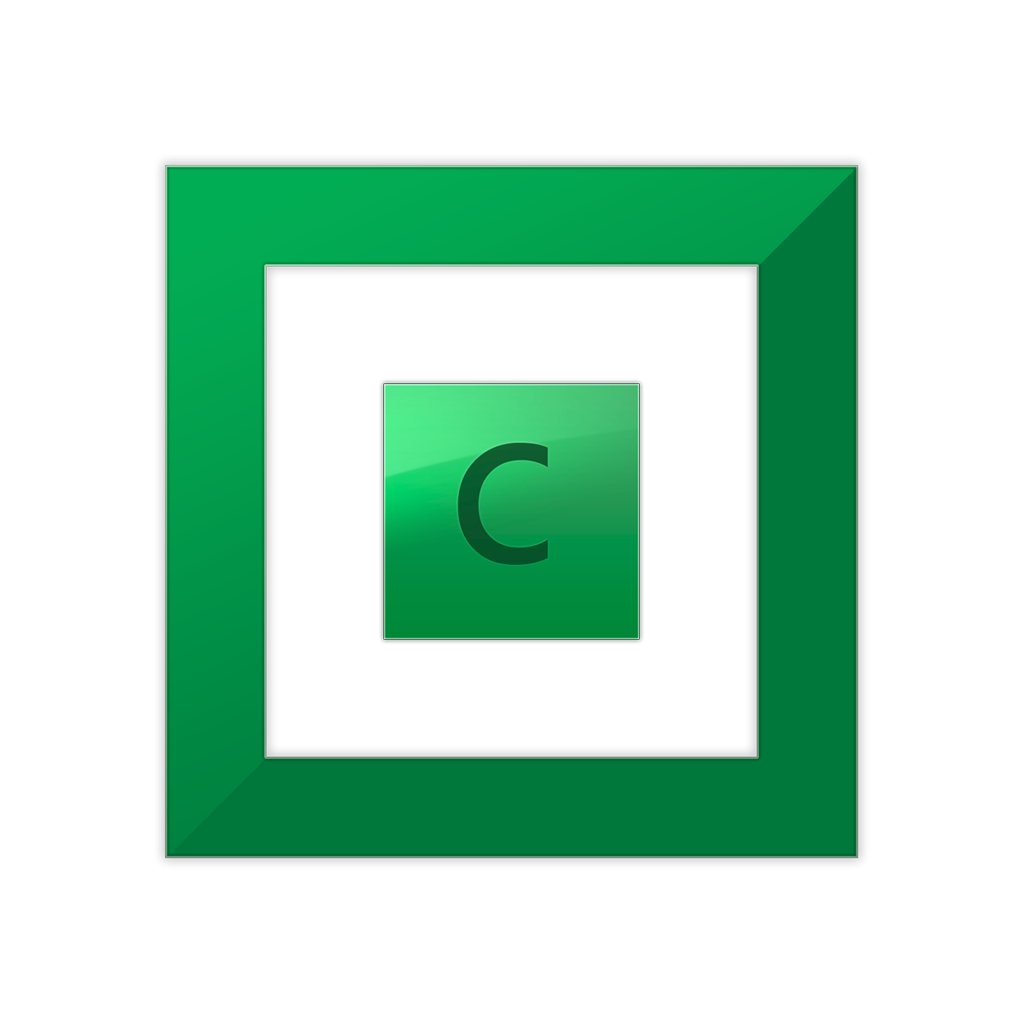-
Posts
11700 -
Joined
-
Last visited
-
Days Won
388
Reputation Activity
-
 Christopher (Drashna) got a reaction from BIFFTAZ in Scanner compatibility with Hard Disk Sentinel.
Christopher (Drashna) got a reaction from BIFFTAZ in Scanner compatibility with Hard Disk Sentinel.
There should be absolutely no issue with doing so.
Neither product does anything that takes exclusive control over anything, so it should be safe to run both products concurrently.
What are you trying to monitor specifically, here? If you don't mind me asking.
-
 Christopher (Drashna) got a reaction from Shane in Scanner does not save progress when switching drives?
Christopher (Drashna) got a reaction from Shane in Scanner does not save progress when switching drives?
To add to this, yes, the progress is saved. The "scanning" percentage is based on what needs to be scanned currently, not on the whole disk. Which can be misleading.
That said, you can see how the drive is tracked here:
https://stablebit.com/Support/Scanner/2.X/Manual?Section=Disk Scanning Panel#Sector Map
And you may note that each sector has a date when it was last scanned. Each region is tracked, and different regions on the same disk can and will have different dates and times. Over time, this should actually help the software to "learn" when to scan the drives, by picking times when they are much less likely to be throttled.
-
 Christopher (Drashna) got a reaction from ZagD in Can I use Drivepool inside a VM?
Christopher (Drashna) got a reaction from ZagD in Can I use Drivepool inside a VM?
You absolutely can use StableBit DrivePool in a VM. There shouldn't be any issues with doing so, if you're passing the whole disk through.
The only caveat is that you may not get SMART support for the drives inside of the VM, but this depends on hypervisor and how things are configured.
-
 Christopher (Drashna) got a reaction from roirraWedorehT in Beware of DrivePool corruption / data leakage / file deletion / performance degradation scenarios Windows 10/11
Christopher (Drashna) got a reaction from roirraWedorehT in Beware of DrivePool corruption / data leakage / file deletion / performance degradation scenarios Windows 10/11
I'll post it here too.
There is a fix in the latest betas involving memory corruptions of file IDs.
However, ... the issue may also be the wrong API being used:
-
 Christopher (Drashna) got a reaction from Tiemmothi in FAQ - Unduplicated vs Duplicated vs Other vs Unusable
Christopher (Drashna) got a reaction from Tiemmothi in FAQ - Unduplicated vs Duplicated vs Other vs Unusable
To clarify (and make it simple to find), here is Alex's official definition of that "Other" space:
-
 Christopher (Drashna) reacted to Elijah_Baley in It appears my boot sector is corrupted
Christopher (Drashna) reacted to Elijah_Baley in It appears my boot sector is corrupted
Folks, thank all for the ideas. I am not neglecting them but I have some health issues that make it very hard for me to do much of anything for a while. I will try the more promising ones as my health permits but it will take some time. From operation and the lack of errors during writing/reading it seems that I am in no danger except duplication won't work. I can live with that for a while.
Keep the ideas coming and, maybe, I can get this mess fixed and report back which tools worked for me.
I am making one pass through my pool where I remove a drive from the pool, run full diagnosis and file system diagnosis on that drive then I re-add it back to the pool. When completed that will assure that there are no underlying drive problems and I can proceed from there.
Thanks to all who tried to help this old man.
-
 Christopher (Drashna) reacted to msq in Google drive not supported after may 2024? Why?
Christopher (Drashna) reacted to msq in Google drive not supported after may 2024? Why?
You and your fibre broadband bubble
Fair enough, thank you for your response. We'll wait for a message from Alex.
-
 Christopher (Drashna) got a reaction from msq in Google drive not supported after may 2024? Why?
Christopher (Drashna) got a reaction from msq in Google drive not supported after may 2024? Why?
Alex has said that he plans on postind on the forums an announcement about this, and it may be best to wait for that.
That said, between the fact that Google Drive has always had a 750GB per account per day upload limit (which is pretty low), some of the odd issues that pop up with it, and that they've recently limited to 1TB (or 5TB) of data and lock the account if it exceeds it (eg, stops uploads), the writing has been on the wall for a while.
-
 Christopher (Drashna) got a reaction from Zammo in Using a little used drive from pool as replacement
Christopher (Drashna) got a reaction from Zammo in Using a little used drive from pool as replacement
No. There is some very hidden data that doesn't copy over, really. But if the new drive is added to the pool, you could copy the contents of the PoolPart folder on the old drive to the PoolPart folder on the new drive. Just make sure you remeasure after it's done.
-
 Christopher (Drashna) got a reaction from Shane in Google drive not supported after may 2024? Why?
Christopher (Drashna) got a reaction from Shane in Google drive not supported after may 2024? Why?
Alex has said that he plans on postind on the forums an announcement about this, and it may be best to wait for that.
That said, between the fact that Google Drive has always had a 750GB per account per day upload limit (which is pretty low), some of the odd issues that pop up with it, and that they've recently limited to 1TB (or 5TB) of data and lock the account if it exceeds it (eg, stops uploads), the writing has been on the wall for a while.
-
 Christopher (Drashna) got a reaction from gihayes in Micro-management Of Drivepool - Solved by using junctions.
Christopher (Drashna) got a reaction from gihayes in Micro-management Of Drivepool - Solved by using junctions.
Agree. I use Link Shell Extension, as well. It is super useful!
-
 Christopher (Drashna) got a reaction from DP_ in Want to Use Immediate and Daily Balancing Simultaneously
Christopher (Drashna) got a reaction from DP_ in Want to Use Immediate and Daily Balancing Simultaneously
Is there a reason the "not more often than every X hours" option doesn't work for you?
-
 Christopher (Drashna) got a reaction from Doug in Not showing any disk activity in 'Disk Performance' section of the Main UI window
Christopher (Drashna) got a reaction from Doug in Not showing any disk activity in 'Disk Performance' section of the Main UI window
You may need to do this:
https://wiki.covecube.com/StableBit_DrivePool_Q2150495
-
 Christopher (Drashna) got a reaction from Shane in What in the world have I messed up on my balancers?
Christopher (Drashna) got a reaction from Shane in What in the world have I messed up on my balancers?
If you want to use the SSD Optimizer and use the rest of the pool, the "simplest" option may be to use hierarchical pools. Eg, add the SSD/NVMe drives to a pool, add the hard drives to another pool, and then add both of these pools to a pool. Enable the SSD optimizer on the "pool of pools", and then enable the balancers you want on the sub-pools.
-
 Christopher (Drashna) got a reaction from gtaus in Reasonable time to evacuate a drive?
Christopher (Drashna) got a reaction from gtaus in Reasonable time to evacuate a drive?
There isn't a set amount of time, because tasks like balancing, duplication, etc run as a background priority. This means that normal usage will trump these tasks.
Additionally, it has the normal file move/copy issue, estimates can jump radically. A bunch of small files take a lot more time than a few large files, because it's updating the file system much more frequently. And for hard drives, this means that the read/write heads are jumping back and forth, frequently.
But 6-12 hours per TB is a decent estimate for removal.
-
 Christopher (Drashna) got a reaction from Gabe in Balancing hardlinks
Christopher (Drashna) got a reaction from Gabe in Balancing hardlinks
No. Hardlinking doesn't work on the pool drive, at all, and never will. The hard links are an object/feature of the volume, not the disk, and require that all instances of the file be on the same *physical* volume.
They work on StableBit CloudDrive, because it doesn't emulate the filesystem the way that StableBit DrivePool does. It handles things on a block level (below the file system, basically), and never directly deals with the file system. Because of this, just about anything you can do on a normal disk, you can do on the StableBit CloudDrive disks.
But if they're pooled, then the pool's limitations still apply (at least to the pool drive).
-
 Christopher (Drashna) got a reaction from dibu in NtStatus=0xC0000121 error then removing damaged drive from array
Christopher (Drashna) got a reaction from dibu in NtStatus=0xC0000121 error then removing damaged drive from array
First, I'm sorry to hear about your drive, as that is never a pleasant experience.
You may be able to use "dpcmd ignore-poolpart" to eject the drive from the pool. This marks the drive as removed, but doesn't move any of the files off of it, and causes the drive to show up as "missing" in the UI. This does require writing to the drive, to write the tag that marks it as removed.
Once the drive is ejected, you can manually move the files over.
The poolID for the drive is the name of the hidden "PoolPart.xxxx" folder on the disk (with or without the PoolPart part).
-
 Christopher (Drashna) got a reaction from ZagD in Switching from folder to file (pool) duplication
Christopher (Drashna) got a reaction from ZagD in Switching from folder to file (pool) duplication
Correct. Duplication is inheritted unless explicity set. Enabling pool file duplication enables it for the root, and everything else gets inherrited. And when you change it, it checks to see which files need to be duplicated or unduplicated (the "checking duplication" part that you may have seen). So, it shouldn't mess with the existing data.
-
 Christopher (Drashna) reacted to Shane in iDrive e2 error
Christopher (Drashna) reacted to Shane in iDrive e2 error
Perhaps you could ask Stablebit for an extension of the trial, to test clouddrive with idrive again, via the contact form?
-
 Christopher (Drashna) got a reaction from tphank in Google Drive + Read-only Enforced + Allocated drive
Christopher (Drashna) got a reaction from tphank in Google Drive + Read-only Enforced + Allocated drive
For reference, the beta versions have some changes to help address these:
.1648 * Fixed an issue where a read-only force attach would fail to mount successfully if the storage provider did not have write access and the drive was marked as mounted. .1647 * Fixed an issue where read-only mounts would fail to mount drives when write access to the storage provider was not available. .1646 * [Issue #28770] Added the ability to convert Google Drive cloud drives stored locally into a format compatible with the Local Disk provider. - Use the "CloudDrive.Convert GoogleDriveToLocalDisk" command.
-
 Christopher (Drashna) got a reaction from Shane in Google Drive + Read-only Enforced + Allocated drive
Christopher (Drashna) got a reaction from Shane in Google Drive + Read-only Enforced + Allocated drive
For reference, the beta versions have some changes to help address these:
.1648 * Fixed an issue where a read-only force attach would fail to mount successfully if the storage provider did not have write access and the drive was marked as mounted. .1647 * Fixed an issue where read-only mounts would fail to mount drives when write access to the storage provider was not available. .1646 * [Issue #28770] Added the ability to convert Google Drive cloud drives stored locally into a format compatible with the Local Disk provider. - Use the "CloudDrive.Convert GoogleDriveToLocalDisk" command.
-
 Christopher (Drashna) got a reaction from Harrr in Download disk from Cloud to local mounting
Christopher (Drashna) got a reaction from Harrr in Download disk from Cloud to local mounting
beta version:
* [Issue #28770] Added the ability to convert Google Drive cloud drives stored locally into a format compatible with the Local Disk provider. - Use the "CloudDrive.Convert GoogleDriveToLocalDisk" command.
-
 Christopher (Drashna) got a reaction from andrewds in Add drive to pool but don't use until rules are created
Christopher (Drashna) got a reaction from andrewds in Add drive to pool but don't use until rules are created
it sorts by votes by default, which is ... frustrating, IMO.
-
 Christopher (Drashna) got a reaction from VapechiK in Any way to rescan only bad blocks?
Christopher (Drashna) got a reaction from VapechiK in Any way to rescan only bad blocks?
Yup. If you mark the bad blocks as unchecked, it will attempt to scan those blocks at the next available time (typically immediately). If the rest of the disk is marked as healthy, it will only scan these blocks (as it only scans sections of the disk that are not checked or haven't been checked in the normal scan window (30 days).
-
 Christopher (Drashna) got a reaction from Shane in Google drive+ drive pool+ Cloud drive read only mode possible?
Christopher (Drashna) got a reaction from Shane in Google drive+ drive pool+ Cloud drive read only mode possible?
It depends on how the API handles it, TBH. As long as the data is accessible, that's the important part. However, I do believe that the account has to be writable, as some data is written to the provider when the drive is mounted (at the very least, for the "attach"/lock file for the drive. But as shane mentioned, there was a fix related to this in the beta version.
However, we've added Google drive to the converter tool, so that you can download the contents, and convert to the local disk provider. This is also in the beta version.
Specifically, you'd need to run "CloudDrive.Convert GoogleDriveToLocalDisk" to kick this off.








